Submarine "Chakra" goes home. Achievements and Challenges of Our Underwater Export
First, a short recent insider on one of the specialized forums ( link):
Vovanych, 26.02.2021/XNUMX/XNUMX: Did they come up with it or who suggested? If anything - this is the newest "leopard".
K-91, 27.02.2021: Corresponding. the order has already determined / apparently preliminary / marching headquarters.
Vovanych, 27.02.2021/XNUMX/XNUMX: Let's first wait for official comments on this situation.
Gogs, 27.02.2021/XNUMX/XNUMX: What is the reason for not extending the lease?
K-91, 27.02.2021/XNUMX/XNUMX: The answer, probably, they know in the tower ... The one with the chimes. India has not signed the docks for renewal, and we are working on a return process.
Grandfather Mitrofan, 05.06.2021/2012/10: They write different things ... the fact that the return of the submarine is connected with the approaching expiration of the lease: in XNUMX, it was transferred to the Indian side on a XNUMX-year lease. There have been no official comments on this yet. According to the Indian television channel NDTV, the submarine's premature return is due to "problems with its maintenance, including the power plant" ...
Snake, 05.06.2021/10/XNUMX: The Indians have rolled it up in XNUMX years to such an extent that the boat has been mostly moored for the last two years. In this regard, it was decided not to renew the lease.
Help. The construction of the K-1991 nuclear submarine (NPS) of project 152, serial number 971, laid down in 518 at the Amur shipyard (ASZ), was actually stopped after a couple of years, however, due to the delivery at the time of the start of construction of almost the entire range of the established main equipment and complexes, had in the mid-90s. high percentage of readiness (68%).
The decision to complete the construction was made in October 1999 during a visit to the plant by Prime Minister Putin, who said on the slipway:
However, active work on the completion, already on the modernized project 971I and the Indian customer, resumed after in January 2004, during a visit to India by Russian Defense Minister Sergei Ivanov, an agreement was signed on the construction and lease of two nuclear submarines (in fact, the work was carried out one at a time) ... Initially, the transfer of the boat to the Indian Navy was planned in mid-2007, but the construction schedule was disrupted.
Only on January 22, 2012, all tests were completed and the transfer to the Indian side was completed, the K-152 raised the Indian flag, becoming S 72 Chakra.
After making her own trip to India, she arrived at the Visakhapatnam base on March 29, 2012.
The submarine was very intensively used by the Indian side, which, given the difficult technical conditions of the "warm ocean", led to significant operational loads on the structure, so that the last few years, according to a number of resources, the boat (as opposed to very active work at sea at the beginning of service) went out into the ocean very rarely.
Our Navy knows very well what the intensive consumption of motor resources in the Indian Ocean is. For example, the former commander of the 10th division of the nuclear submarine, Rear Admiral A. Berzin ( link):
I proposed the following plan for their use: not to send these submarines on long voyages, but to use them as floating "batteries" that should carry the BS in bays at anchor, in a submerged position. The plan was not accepted, they began to be sent to the Indian Ocean for up to 7-8 months.
Inter-voyage repairs were carried out on the Dakhlak island or in the roadstead. Repair on paper. In the shortest possible time, the motor resource was selected, the boats were turned into trash. In 1983-1984, the US Navy held the following event twice:
From the Aleutian Islands, along Kamchatka and the Kuril Islands, the Sea of Japan passed the AMG (AUG). They violated the airspace and so on and so forth. The Pacific Fleet sat with a hunted mouse ...
June 3 in LiveJournal dambiev (a very interesting and high-quality information resource on military technology and politics), a message was published: "Nuclear submarine INS Chakra of the Indian Navy is sent to Vladivostok."
And then on June 4: "BPK" Admiral Tributs "and the nuclear submarine INS Chakra in the Singapore Strait."
Note. In addition to the nuclear submarine and the BOD, the compound also includes the Kalar rescue tug.
According to The Hindustan Times ( link):
Obviously, taking into account the technical condition and basing conditions in Vladivostok itself, the nuclear submarine has nothing to do, and Chakra actually goes either to Pavlovsky Bay (the place where the abbreviated 4th flotilla Nuclear submarine Pacific Fleet), or directly to the plant in Bolshoy Kamen.
In order to understand this situation, you need to remember the background.
Diesel start Indian submarine
The Indian Navy's submarine forces began in the mid-60s under a set of contracts for the supply of modern military equipment to the USSR, part of which was the construction in a very short time of a series of 4 diesel-electric submarines of Project 641 (according to NATO classification - Foxtrot) of the Kalvari type with the head INS Kalvari in December 1966 and the delivery of the last boat of the INS Kursura series in December 1969.
Taking into account the very positive experience of operating the first four diesel-electric submarines, in the early 70s, another four was ordered, according to the slightly modified Vela project. The lead INS Vela was laid down in January 1972, and in December 1974, the last ordered diesel-electric submarine of this sub-series entered service.
They exploited and conducted combat training on the newest (then) diesel-electric submarines of the Indian Navy, one might say, with "ecstasy" and great desire. Fortunately, simple, efficient and reliable ships and their weapon it was provided.
The diesel-electric submarines were originally repaired in the USSR (at Dalzavod). Remembers the captain of the 1st rank, retired L.M. Bozin ( link):
And then there are very interesting details on technology and combat training (with the author's comments):
Commentary of the author of the article (based on personal assessments and clarification of details from L.M. Bozin): "rubbish" does not mean that "torpedoes broke", which means that they were fired very, very often and often. There were no forms with them, but, according to Bozin's professional assessment, for each SET-53M or 53-56V there were many, many tens of shots (that is, what we had close to the limit values for individual torpedoes, the Indians had a massive the practice of active torpedo firing).
From the author: on the first torpedoes 53-56V and SET-53M (for more details on the last one - article "Torpedo SET-53: Soviet" totalitarian ", but real") has grown, both professionally and in a career sense, a significant part of the command of the Indian Navy, and they still treat these long-obsolete torpedo weapons with special reverence! Moreover, the same SET-53M for training purposes are still in the offices of the Indian Navy training centers.
And the conclusion from this for the "today and the future" - give foreign customers a lot, effectively and efficiently shoot torpedoes, and his attitude towards us will be appropriate.
Diesel-electric submarines of project 641 actively served in the Indian Navy until the late 90s - 2000s, and Indian enterprises have successfully mastered both their repair and modernization (for example, the installation of new Indian hydroacoustics).
INS Vagli was the last to be withdrawn from the Indian Navy on December 9, 2010 (that is, 36 years of impeccable service, while INS Vagli performed the last dive six months earlier - on July 21, 2010).
The very positive results of the operation of diesel-electric submarines of project 641 led to the order of the Indian Navy for a large series of diesel-electric submarines of the new project 877EKM and then to their repeated repairs to extend their service life with equipping them with new weapons (including the CLUB missile system).
In 2013, the S63 Sindhurakshak diesel-electric submarine (project 877EKM) died in the base from a series of internal explosions, while no claims were made against the Russian side for what happened (obviously, for "internal Indian reasons").
Atomic "Chakra"
Back in 1982 (that is, even before the signing of the contract for diesel-electric submarines of project 877EKM), negotiations began on the possibility of obtaining the Indian Navy on lease from the USSR atomic submarine. In the same year, a delegation of the Indian Navy examined the Project 670 missile nuclear submarine (according to unofficial data, and the Project 671 torpedo submarine). The Indian Navy stopped its choice on a missile nuclear submarine.
Immediately after that, during the period from the second half of 1982 to the middle of 1984, a medium repair was carried out on the K-43 Pacific Fleet nuclear submarine with its modernization according to project 06709, with the removal of a number of weapons, in particular, to ensure the operation of nuclear weapons, and installation of new complexes, for example, SJSC "Rubicon" (for more details - "Rubicon" of underwater confrontation. Successes and problems of the MGK-400 hydroacoustic complex ").
In March 1985, an Indian crew (previously trained in one of the training centers of the USSR Navy) arrived at the nuclear submarine for the first time.
On August 24, 1987, according to "official data", India "signed a contract for the lease" of the K-43 nuclear submarine. There are certain questions here, since it is obvious that the modernization of the nuclear submarine under the export project could be carried out only after the signing of some specific agreements and documents, with the coordination of the appearance and composition of the nuclear submarine's armament with a foreign customer (for example, officers involved in the planned transfer of K- 43, it was indicated that the Rubicon SJC was installed on the K-43 precisely at the request of the Indian side).
On January 5, 1988, the acceptance act was signed, the flag of the Indian Navy was raised. The nuclear submarine K-43 was renamed S-71 Chakra.
Her Soviet commander, Captain 1st Rank A.I. Terenov ("Voyage across the Three Seas. Swan Song of the cruising submarine K-43") left wonderful memories of this.
Already today (ten years ago), after a severe accident on the K-152 Nerpa, Alexander Ivanovich did not publicly say a single word in defense of the crew (while the “top officials” of the ASZ openly “drowned” the crew, not disdaining outright lies ) - at that moment he was no longer the commander of the submarine, but the deputy general director of the ASZ. Alas, people sometimes change ...
However, his book is professionally written, exceptionally good and honest: about the ship, and about the people with whom he served and whom he taught (including Indians), and about himself personally. Then, when he was the commander of K-43 / "Chakra", and - the Commander with a capital letter.
From a book about the specificity of operating conditions in India, clearly and harshly:
We made a very serious mistake during the last renovation by not insisting on replacing the drainage line. Now it is already difficult to figure out who is to blame: the technical management of the fleet, which saved money, the plant, which considered this work too laborious, or the crew, which did not show persistence. We paid in full for this mistake, and after 1,5 years we were forced to do this work, but already in India. The condition of the drainage line was the main cause of numerous accidents related to water ingress and fires, which were successfully dealt with, influenced by numerous damage control drills, but by the end of the lease, the technical condition of the ship was excellent.
About the accident on June 5, 1990 with a simultaneous inflow of water, a powerful fire, a jam of horizontal rudders and a loss of speed at a depth:
Formally, of course, he was right, since the ship should have been able to submerge to a much greater depth, but ...
At a depth of 180 meters, the rubber-metal branch pipe of the auxiliary equipment cooling system in the hold of the 3rd compartment was torn out, a meter from the largest electrical mechanisms - a reversible converter, VPR [rotary converter - MK] and the main switchboard of the starboard side.
In a matter of seconds, while the power and stroke were increased to full, the hold was filled with seawater, which flooded the reversible converter, VPR and closed the supply tires of the main switchboard.
From a powerful electric arc, the main shield blazed like a sheet of paper, melted, spewing molten metal around. When the power was switched to the other side, the emergency protection of the reactor was overwhelmed at a power of 90% and at a depth of 160 meters they were left without running, without power, with jammed horizontal rudders, with a fire on the lower deck and a filled hold in the central compartment.
It should be noted here that even such a "cascade" of real "emergency input" for a trained and worked crew does not present any exceptional complexity. The boat surfaced, emergency situations were eliminated in the shortest possible time, and after several months of repair work, the ship was again serviceable and in service.
A real danger to the ship could only be with a "slack" and unprepared crew (for example, it seems like a "trifle" (in fact, there are no such trifles in the underwater business) such as non-tightened inter-element connections in the battery (backup source of electricity) and hypothetical problems with starting a diesel generator (emergency source) are already a prerequisite for a complete loss of power and a severe accident of a nuclear installation with depressurization of the reactor and uranium fuel composition due to the impossibility of heat removal from it). However, the crew of the S-71 Chakra was properly trained.
The very good training of the Indian crew, their exceptional meticulousness and responsible attitude took place in literally all aspects of the underwater service. Until the last days of the ship (handing it over for disposal in Kamchatka), the "monument" to the latter remained the operational documentation of the nuclear power plant, filled by the Indian side with literally calligraphic handwriting.
In just 3 years (a little more) as part of the Indian Navy, the S-71 Chakra traveled 72 thousand miles, the reactor operated for 430 days (that is, the "average speed" during operation was just over 7 knots), spent (in 3 years) 5 missile and 42 torpedo firing (which is very much higher than that of the naval submarine).
During the third and final year of the lease (1990), India made a request for an extension of the contract, but the Soviet leadership (under obvious "external pressure" from the United States) refused.
On January 5, 1991, the return acceptance of nuclear submarines began, and on March 1, the boat was accepted into the Navy, again becoming K-43. A year and a half later, in August 1992, the K-43 was withdrawn from the Russian Navy, while still in a fairly good technical condition.
The Indian Navy gained invaluable and extensive experience in the training of personnel and the operation of nuclear submarines, having felt the great tactical and operational capabilities of missile weapons and nuclear submarines.
In terms of missile weapons, this had almost immediate consequences for the implementation in the Russian Federation of an actually ordered, from the Indian Navy, R&D (development work) to complete the creation of the KLAB cruise missile complex (export "Caliber") and immediately, after its completion, "calibrate" surface ships and submarines of the Indian Navy.
The question was raised of leasing a modern nuclear submarine already of the 3rd generation.
Problematic completion and accident of K-152
Completion of the K-152 (already under the new export project 971I) began only in 2004, with many (taking into account the collapse of the 90s) difficulties.
In 2007, in the water area of Bolshoy Kamen (the outfitting base of the ASZ), mooring tests began.
On November 8, 2008, during factory sea trials, as a result of the unauthorized activation of the LOH fire extinguishing system (filled with poisonous tetrachlorethylene instead of the standard freon 114B2), 20 people (3 military personnel and 17 civilian specialists) died on the Nerpa.
How it was (the beginning of the accident at the timing of 3:29 recording).
Let me emphasize that this is not a "exercise", not a "movie", this is a real, sudden and extremely difficult emergency situation, which was previously impossible to imagine, which was never taught, and the fight against it was never practiced. An emergency situation when the personnel and civilian crew fall en masse and "go out of order" (20 people - forever).
"SP" asked the former Deputy Chief of Staff of the Pacific Fleet Rear Admiral of the Reserve Andrei Voitovich to comment on the video.

Admiral's explanation:
At first we hear the measured, monotonous work of the crew. Everything changes abruptly at 18:54:37 - a howler sounded throughout the ship, warning about the supply of a fire extinguisher to the 2nd compartment.
18:54:45 - a voice is heard: "What is this?" Why such a reaction? Everything is unexpected, unauthorized.
18:54:49 - you can hear how the divers began to be included in the isolating means. Noisy breathing - this is a person who is included in the SDA (hose breathing apparatus).
18:55:03 - emergency alert for the ship. This is 25-30 calls.
18:55:08 - a command to blow through the middle group of main ballast tanks (CHB). The boat started to surface.
18:55:15 - it was announced on the ship that a fire extinguisher was supplied to the 2nd compartment.
18:55:25 - the order was given to the personnel of the 1st and 3rd compartments to occupy the defense lines. 1st - on the aft bulkhead, and 3rd - on the forward bulkhead. At the same time, commands are given to the 1st and 3rd - for sealing.
18:59:39 - the command sounds "The head of the medical service to arrive in the 2nd compartment!"
18:59:48 - there are reports on the condition of the compartments and people.
19:03:37 - ventilation of the compartments started.
19:03:51 - taking the affected people upstairs. All the time from the moment of the announcement of the emergency alarm there was a clarification of the situation in the compartments and the condition of the people.
In fact, these are just fragments of what was happening on the Nerpa in those minutes.
The video recording did not record everything. Indeed, after surfacing, it was necessary to quickly equalize the pressure in the compartments with atmospheric. It is necessary to prepare a ventilation system. By order of Dmitry Lavrentyev, they began to evacuate the injured through the 3rd compartment.
On the whole, from the point of view of the “Manual on Damage Control”, in terms of speed and professionalism, everything was done impeccably and the only correct way. Any other action by the commander and crew would have resulted in more deaths. The boat and the people would have been a khan. HA-HA! "
14 submariners will subsequently be awarded the Order of Courage, 20 - Ushakov's medals, 4 - medals "For Courage".
The details of what happened and the actions of the personnel are known to the author "not only from the media", he served nearby, he personally and well knew many in the K-152 crew; an officer of a higher management body. In short - the crew acted not only skillfully (we look at the timing - there the score was practically in seconds), but also really heroic. And only thanks to this there were “only 20” dead, just hesitate - there would be many, many more corpses.
Commander Lavrentiev was also presented for the award, but ...
The perpetrators of the terrible state of emergency were “appointed” by the submarine commander D. Lavrentyev and the bilge sailor D. Grobov.
And further from ARTICLES:
“For some reason, Freon was refueled at night. And no trace of who did this has ever been found. When they began to figure out where and how this freon was purchased, it turned out - 5 one-day firms, which no one found either. The military representative, who signed the certificate of conformity, died strangely - he went fishing on a bicycle in winter, fell into the wormwood and drowned with the bicycle. "
Recently, the commander of the Eastern Military District, Admiral Konstantin Sidenko, spoke at the trial. Here is his opinion:
"Guard Captain 1st Rank Lavrentyev should not be tried, but presented to the Order of Courage."
Lavrentiev was acquitted by the court. The question is - where are the premium materials for it? And why, and on what basis, the assessment of the commander and his actions in a difficult emergency situation by the Military Council of the Pacific Fleet was “thrown into the basket”?
Moreover, in 2009 the State tests of "Nerpa" were formally completed, the acceptance certificate was signed. However, further, in 2010, the "final State tests" were carried out.
From the author's article in the "Military-Industrial Courier" "Tragedy on the" Nerpa ": facts and questions" (part1 и Part 2):
“... at 0 hours 38 minutes on the nuclear submarine“ Nerpa ”there was a malfunction of the software for the remote automated control system for general ship systems (SDAU OKS)“ Molybdenum-I ”, as a result of which, without the operator's command, the pressure drop alarm in the LOH system pipelines was triggered (boat volumetric chemical alarm about the supply of a fire extinguisher to the compartment), the left column of the OKS CPU is out of order and remains inoperative ...
The result of all this (from the article "We'll see!" On the importance of the media and publicity of "burning" issues "):
That is, the Nerpa (its automation, the same for our entire fourth generation of submarines) was brought up (more precisely, the development of events forced the VIPs of the industry to set the task of unconditionally fine-tuning the automation of new submarines).
And here the tough and uncompromising position of the crew and the commander of the K-152 in rejection of the serious shortcomings of the automation and the ship played an extremely important role in the fact that the shortcomings of the automation (both on the K-152 and on other new nuclear submarines of the Navy) were actually eliminated.
The Indian crew was prepared to receive the boat and operate it (including independently at sea).
Here, however, it is worth paying attention (and thinking about the future) to the number of firing: in total, “still our” “Nerpa”, under the program of State tests, fired by our crew two rocket fires (at ground and sea targets) and 4 torpedo fires, and one self-propelled fire. device of hydroacoustic counteraction MG-74M. For comparison: during the training of the “first Chakra” crew, 35 torpedo firing was carried out in three months. In the case of "Nerpa", they got along "practically dry" (which could not but "raise questions" from the Indian side).
S 72 Chakra in the Indian Navy
As noted above, at the beginning of its service, the nuclear submarine was actively exploited. There were cases of failure of technical means, but measures to repair them were quickly taken, and even new "hardware" was promptly repaired.
In addition to powerful missile weapons, the Indian side received high marks for secrecy and means of searching for nuclear submarines (including a flexible extended antenna - GPBA).
In early October 2017, the Chakra submarine returned to base in Visakhapatnam after "some incident." According to one of the versions of the Indian media, Chakra was underwater at high speed when a mechanical damage to the GAC fairing occurred. But, as the Commander-in-Chief of the Indian Navy, Admiral Sunil Lanba, told the media, "she will soon return to service, the Indian side has already ordered parts of the GAC fairing, which should soon go to India."
Having some experience in 971 projects, I doubt that the resulting problem could be quickly resolved. The GAK baffle fairing is really a weak point of the 971 project, but it's worth it, because its "lightness" for loads gives the boat "very good hearing." If the damage really happened after long strokes, there could be an operational error (for example, they forgot to switch the pressure relief valve from the GAK baffle in the 1st compartment).
"Another nuclear submarine" and the problem of repairing multipurpose nuclear submarines of the 3rd generation
From the very beginning of the negotiations, the Indian side expressed a desire to lease two nuclear submarines. However, their shortage in the Russian Navy and the difficult technical condition in the 2000s did not allow translating this "declaration of intent" into a practical plane.
Several Project 971 nuclear submarines were considered for medium repairs with modernization for the subsequent transfer to India, starting with the 3rd building of the ASZ - "Kashalot" (by the way, the best construction of all the Pacific ones).
Alas, the delay in the deadline led to the fact that the "Kashalot" went for disposal, and as a potential "Chakra-3" began to be considered K-391 "Bratsk" or K-295 "Samara", delivered in September 2014 to Severodvinsk at The Northern Sea Route from Kamchatka by the Dutch dock ship "Transshelf".
However, this raises an acute problem for both the domestic fleet and the defense industry - a catastrophic failure to meet the deadlines for the modernization and repair of 3rd generation multipurpose nuclear submarines. In short - there is nothing to transfer, the operated nuclear submarines of the 3rd generation are significantly outdated, worn out, have long overdue terms of complex repairs and significant technical limitations.
A series of new nuclear submarines of project 885 (M), which the Indians were also very interested in, was de facto disrupted (it goes with a huge lag behind the established schedule), and most importantly, this project still needs to be finalized and finalized. Accordingly, despite the ardent desire of a highly solvent foreign customer, objectively there is nothing to supply him. Moreover, there are serious doubts about the possibility of delivery of "Chakra-3" within the terms already announced in the media (2025). (RBC, March 7, 2019).
Contemporary problems of the Indian submarine
At the same time, the situation in the Indian Navy itself is far from blissful.
They are based on diesel-electric submarines of project 877EKM, which have been repeatedly extended (but with high-quality repairs with modernization and restoration of many resource indicators in our country - at the Severodvinsk “Zvezdochka”).
Unlike diesel-electric submarines of project 641, the Indian military-industrial complex did not manage to master the independent mid-life repair of "Warsaw women". The only "unit", on which they tried to do it, "hung up" in the repair just for prohibitive terms.
With a significant lag, the program for the construction of new diesel-electric submarines based on the French Scorpena project is being implemented.
At the same time, the answer to the question - why not our Lada went to replace the Varshavians, is simple and obvious.
"Lada" had a good chance of going into the series instead of "Scorpena", but under two tough conditions.
First. Detailed and long-term bench testing of all Lada systems and complexes prior to their installation on submarines (which was not done for a number of objective and subjective reasons). Moreover, having received a "knockdown" on the lead diesel-electric submarine of project 677 (domestic "Lada"), many "morally surrendered" and instead of tough and forced debugging of the new project, they tried to "cover up and hide behind" the "fig leaf" of a series of "obsolete Warsaw women"
And here it was not even the lack of an anaerobic installation at the Lada that determined the victory of the Scorpen, which are now being built like conventional diesel-electric submarines, and only later should receive an anaerobic installation (moreover, of Indian design, not the serial French MESMA). Many (including the bosses) no longer believed in the 677 project (despite the fact that the practice of the 677 project showed that this was not at all the case). Actually, what to expect from the Indians, if we are still building 6363 for ourselves, and it would be okay to have an “emergency order” (“punched out” by Admiral Suchkov) for 6363 for the Black Sea Fleet, but the construction of outdated “Warsaw” for the Pacific Fleet instead of 677 is unambiguous and a serious mistake.
Second. The presence of effective "trump cards" for the project. Missile systems have ceased to be exclusive, but anti-torpedoes could well become "trump cards." However, all the deadlines for equipping our submarines with them were disrupted, and the export was actually deliberately sabotaged, despite the fact that there were no technical problems for this, only "organizational" ones.
From the author's article in NVO on the subject of torpedo protection ( link):
In a previously published article by the author on torpedoes of the Chinese Navy ("Torpedoes of the Great Neighbor", "NVO" dated March 15, 2019), due to the limited volume, the issue of export Chinese torpedoes dropped out. The intrigue lies in the fact that, taking into account the current military-political situation, it is the export Chinese torpedoes that can today "be the first to go into battle" (talking about the Pakistani Navy). Moreover, the most interesting question is the torpedo ammunition load of the new S20 submarines. It is unlikely that these will be outdated Yu-3, most likely - export versions of Yu-6, Yu-9, Yu-10. In this case, the Indian Navy, represented by the Pakistani submarines of the S20 project, will receive an extremely dangerous enemy, especially taking into account the outdated S-303 anti-torpedo defense systems on Indian submarines (including the newest nuclear submarine Arihant) and the significant lag of the Indian torpedoes Varunastra from the new Chinese torpedoes, especially in terms of the CLO level.
However, the Indian Navy has the most serious problems with the nuclear submarine program (nuclear submarine series). It is not just disrupted, the technical level of the only built nuclear submarine INS Arihant openly leaves much to be desired.
With nuclear submarines in India, everything, to put it mildly, is "not very good", starting with clear signs of a second generation in the external exterior and ending with extremely low rates of construction and a number of accidents during operation (according to Indian media).
In these conditions, the Indian Navy are seeking (Navy Seeks Amendment to 30-year Submarine Plan, Wants Six Nuclear Boats Tuesday, May 18, 2021 By Indian Defense News) Here's what:
Since the Defense Research and Development Organization (DRDO) can independently develop AIP technology, all INS Kalvari class submarines will be refitted with new technology during a mid-life upgrade or refit.
While the Indian Navy wanted to add six more diesel-electric submarines equipped with VNEU, national security planners convinced the admirals that the nuclear submarine was a much more powerful platform.
Accordingly, India wants from us a nuclear submarine and not one, but here ...
Opportunities we missed
If it is possible to transfer to India previously built (with repair and modernization) nuclear submarines from the Navy, along with all the existing problems, there is a very complex issue of the service life of their hulls. It is worth noting here the example of the agro-industrial complex "Irkutsk" - the key decision that determined the "second life" for him was the statement of one of the leaders of the Central Research Institute "Prometheus" about his readiness to "exclude from the terms of service of the corps the time it was on a solid foundation" "Zvezda" during the "waiting period for repair").
At the same time, the discussion itself (a meeting led by the AIO of the Chief of the Main Technical Directorate of the Navy Rear Admiral Reshetkin in 2008) of the future "Irkutsk" was fierce, on very "raised voices" (up to "physical measures" of influence on the course of the discussion). This is not a "naval story", the author not only attended it, but also actively participated in the discussion. That is, the question of the service life and resource of the hulls is very important and not easy. The above example took place in 2008, now it's 2021, and all 3rd generation nuclear submarines have since added another 13 years to the years they already had (with both Samara and Bratsk "were waiting for the repair at all not on a" solid foundation ", but on the water).
Taking into account this factor, the “murder” of the titanium (with a service life of the hulls many times exceeding the steel ones) of the Project 945 Barracuda nuclear submarine is simply perplexing. There were many reasons for this, but the key one was the absolutely unfounded and lobbied decision to transfer the "rights" to 945 (A) projects from the developer ("Lazurite") to his competitor "Malachite".
Taking into account the desire of "Malachit" at any cost to drive the series of "Ash" (even with a number of critical flaws that have not yet been eliminated), even to the detriment of the modernization of "their" "Bars" "Development and delivery of documentation for the repair and modernization of" leopards "), his attitude to the" Lazurite stepdaughter "was appropriate ...
At the same time, in fact, we have not only two "barracudas" withdrawn from the combat composition of the Navy, but also "Nizhny Novgorod" and "Pskov" (modernized project 949A "Condor") in the combat composition of the Navy. At the same time, the issue of modernization is actually "buried" for them. Calling a spade a spade is "a mistake worse than a crime."
In this situation, it would be correct to return to Lazurit the rights to 945 (A) projects, with the presentation of barracudas for export (modern technologies allow for a sharp increase in their combat capabilities, figuratively up to generation 3 +++ and a level that is quite capable of resisting even PLA of the 4th generation, and the titanium case provides the required service life and high corrosion resistance in the harsh conditions of warm seas) and full modernization of the "condors" for the Navy.
However, even two "additional" "barracudas" do not provide for the Indian Navy (taking into account all the problems with the construction of nuclear submarines according to its own design) the desired (and necessary) number of nuclear submarines in the Navy.
However, there is a solution here, and it is quite effective. The photo shows a version of the Amur project (export 677) with the Brahmos missile system, the presence in the Russian Federation of a powerful scientific and technical groundwork for small-sized nuclear power plants (NPP) allows instead of a controversial and controversial anaerobic installation to install a reliable nuclear (with multiple increase in the performance characteristics of the submarine).
Such a project would be very interesting for both the Indian Navy and the Russian Navy (for more details - "Does our fleet need a small multipurpose nuclear submarine?").
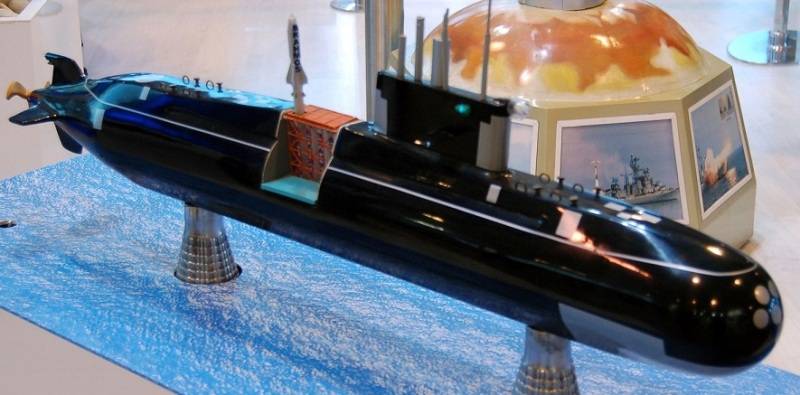
To quote Indian Defense News again:
This is a very wise and well-grounded thought, I emphasize - taking into account a good and reliable groundwork for AEU (including small-sized ones). At the same time, the "Brahmos factor" (one of the most successful and breakthrough projects of cooperation between the Russian Federation and India) allows even a submarine of limited displacement to have powerful strike weapons (and, accordingly, a deterrent potential).
Prospects for "Chakra" and / or other Russian nuclear submarines for the Indian Navy
First. The K-152 "Nerpa" (S72 Chakra) itself and what will happen to it next directly depends on its technical condition. Let me emphasize that the Indian Navy is not only needed, but very much needed. But in the ranks and at sea.
Taking into account the fact that "10 to medium repair" for 971 projects was considered for our conditions of "cold seas" (and much more "sparing" operation), to put it mildly, the "difficult" technical state of "Chakra" is quite logical and expected (taking into account intensive use in warm seas). Here it is worth remembering that the main equipment was installed in its building back in the early 90s (for example, the same block of a steam turbine unit stood for 17 years before the start of factory sea trials).
Today, the Indian Navy has trained personnel and infrastructure for the operation of the "Chakra".
At the same time, I would like to emphasize that the announced deadline for “Chakra-3” (2025) seems to be very “optimistic” and gives rise to serious doubts.
Given this factor, India is objectively interested in extending the lease term for the S72 Chakra, of course, subject to the restoration of its technical readiness (HTG). Based on the obvious complexity of the repair (of course, it will be necessary, among other things, to remove the steam turbine unit from the case and revise it at the manufacturing plant in Kaluga), this can only be done in a shipyard in the Russian Federation. It is very likely that the reactor core will also need to be recharged. But all this is absolutely realistic to do here in 1,5-2 years.
The author believes that it is according to this option (VTG) that events with the S72 Chakra / K-152 will develop.
Second. And the main thing.
Arms export is the policy and authority of the state.
The author of this article once had a chance to get acquainted with the documents on the preparation of the very first contracts for the export of military equipment of the USSR to India in the early to mid 60s. This is an example of how to do it! The fact that export options sometimes differ significantly from those in service with the exporter himself is a well-known and normal situation. However, in the contracts of the 60s, another clearly passed (which in subsequent years was pretty much forgotten in our country), the level of supplied weapons should be high and worthy, including when compared with foreign models and what the opponents of the importing country have ...
Specifically, in the documents of the 60s, this issue was analyzed in detail and with a very high quality. Accordingly, what India received then, despite the initial skepticism of the largely "Anglo-oriented" officer corps, was of high quality, was quickly and well mastered and convincingly confirmed its qualities in battle within a few years. And this real authority (and not "PR authority") of our weapons had very positive and long-term political and economic consequences.
However, the situation today is far from favorable. For example, our modernization of the Indian Il-38 patrol aircraft was carried out according to an openly "castrated" version (moreover, from the originally announced and demonstrated at numerous exhibitions). The bureaucrats' "arguments" for such a cut in the nomenclature and combat capabilities do not stand up to criticism and, in fact, borders on idiocy.
Taking into account the fact that in the difficult financial situation in recent years, export contracts were one of the "drivers" and our R&D, this "castration" had corresponding negative consequences for the domestic Il-38N (and the modernization of the Indian Tu-142ME was generally disrupted by some Russian organizations for purely "organizational reasons").
In contrast, according to the Nerpa, a number of attempts to "castrate" the ship were carefully neutralized by responsible officials thinking about the interests of Russia, and India got a good ship. But not without some shortcomings, for which it would be extremely advisable to conduct an objective analysis (both in technical and in their organizational aspects). And it would not hurt to eliminate them ... I repeat, the supply of military equipment is not only a business, but also politics and the authority of the state.
At the same time, the supply of such unique products as the nuclear submarine is “politics and authority” in the “cube”.
Foreign policy is determined by the President of the Russian Federation, and this is not just an excerpt from the Constitution, but real work, including personal contacts and agreements between the heads of state.
And, of course, the “Chakra (s) factor” is one of the points of both official and unofficial personal communication between the President of the Russian Federation and the Prime Minister of India Narendra Modi.
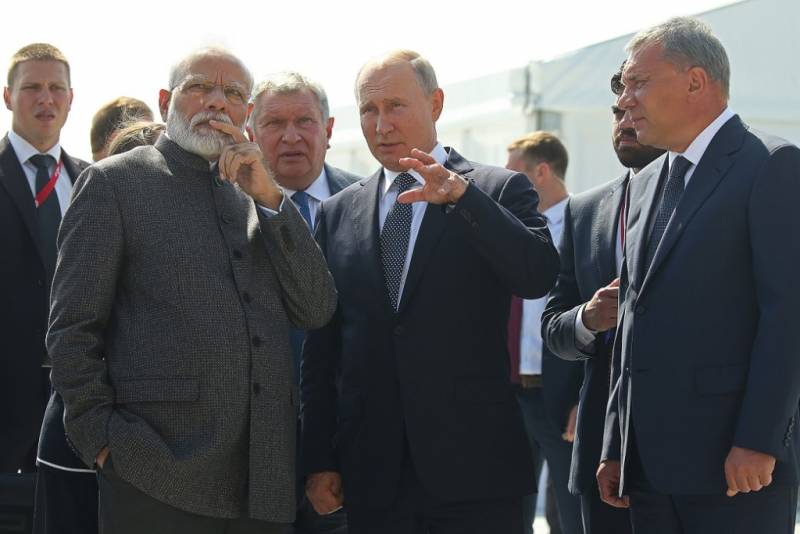
The President of the Russian Federation and the Prime Minister of India visited the Zvezda shipbuilding complex. September 4, 2019.
Taking into account the fact that information on the contract for Chakra-3 (its delivery to India in 2025) was published by RBC (which has its sources in the echelons of power of the Russian Federation), there is reason to believe that the corresponding publications in the Indian media (with their links to Indian sources) are talking about a real contract. Let me emphasize - with an extremely dubious period.
And here it is worth recalling once again the dramatic history for the implementation of the contract and completion of the "Nerpa".
A number of structures in the industry were engaged in the process of its implementation by direct deception of the command of the Navy and the Presidential Administration. Moreover, the author believes that the filling with tetrachlorethylene and the operation of LOC are not at all accidental. Taking into account the fact that during the transfer to a foreign customer, analyzes of all technical means would be done, the replacement of the regular 114B2 freon with poison would certainly have been revealed. That is, it did not make sense even from the "economic" (selfish) logic. But there was more than “another meaning”: the author very well remembers the very nervous and tense state of the industry on the Nerpa in 2007-2008, that “we will not hand over the boat to the Indians” (“we will not be able to”). But the fleet - any "pig in a poke" (which was perfectly shown by the delivery of all the latest nuclear submarines to the Navy, including the most scandalous of them - "Severodvinsk"). And therefore “it would be very good if the foreign customer himself would refuse from Nerpa ...
In fact, Lavrentyev (and a number of crew members) in that situation saved not only a large export contract, but also the authority of the state (and the President). The tough position of the K-152 commander forced (a number of industrial leaders would very much like to see in his place a much more "accommodating" commander, and this is the reason that he was so strenuously "drowned") the industry nevertheless brought automation and eliminate critical shortcomings of both the K-152 and subsequent 4th generation nuclear submarines.
And here the question arises - what about his presentation for the award? "Thrown into the Trash"?
Conclusion
Once again, I will repeat on the possible options for "Russian nuclear submarines for India":
- restoration of the technical readiness of the S72 Chakra (the probability of very complex technical problems on it is small);
- acceleration of work on "Chakra-3" (taking into account the time of construction, most likely, it will be "Samara");
- return to Lazurit of the rights to the 945th project and presentation of the first two nuclear submarines for export;
- a new project based on the "Cupid with Brahmos" and a small-sized nuclear power plant.
Technically, this is all real.
But the main thing is "organizational pitfalls", their elimination. And here it is extremely expedient for the relevant structures (including the Presidential Administration of the Russian Federation itself) to conduct a deep analysis of all the circumstances of the history of "Nerpa" / Chakra.
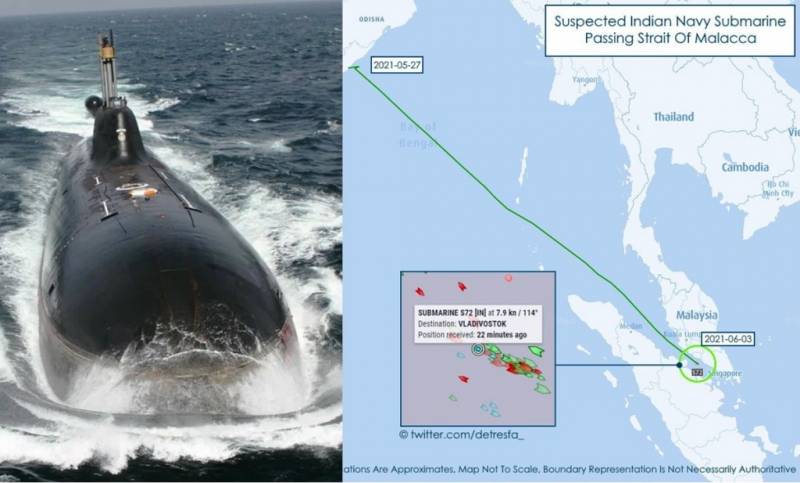
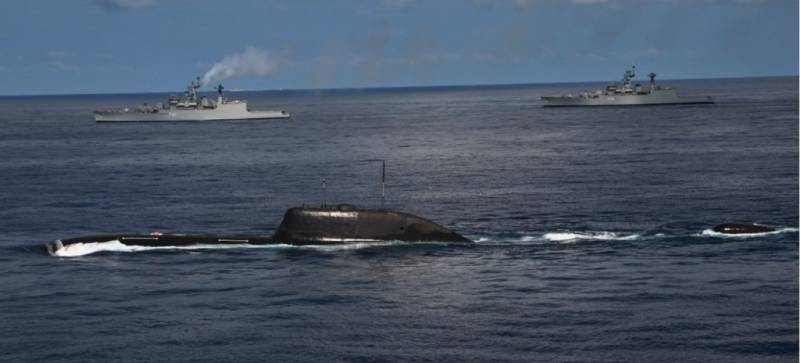
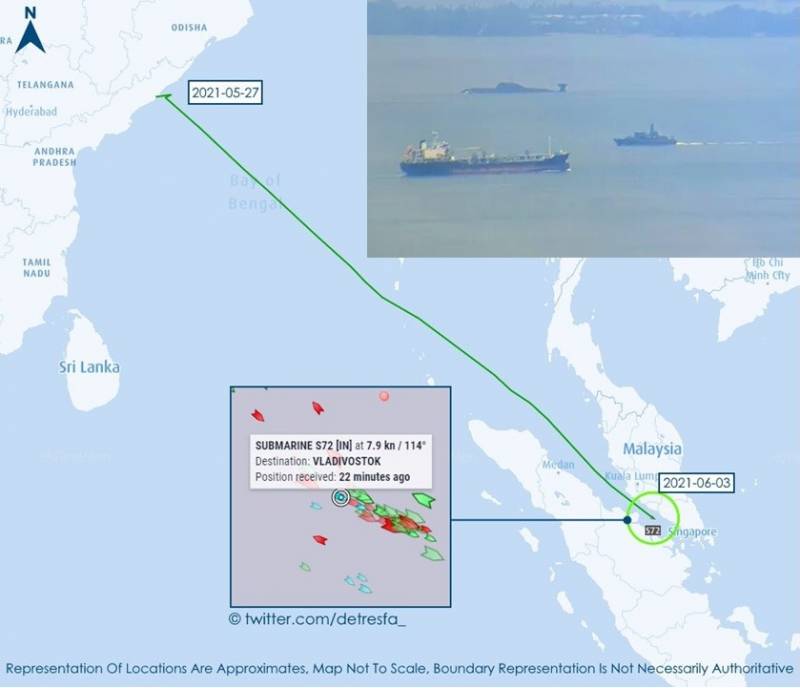
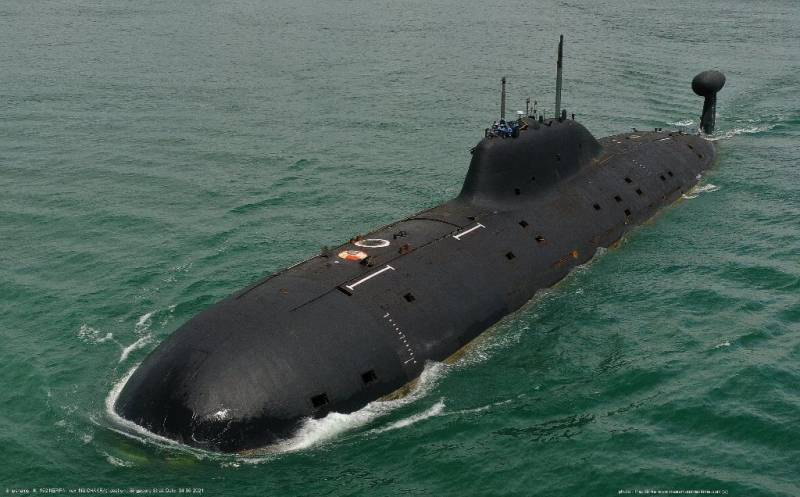
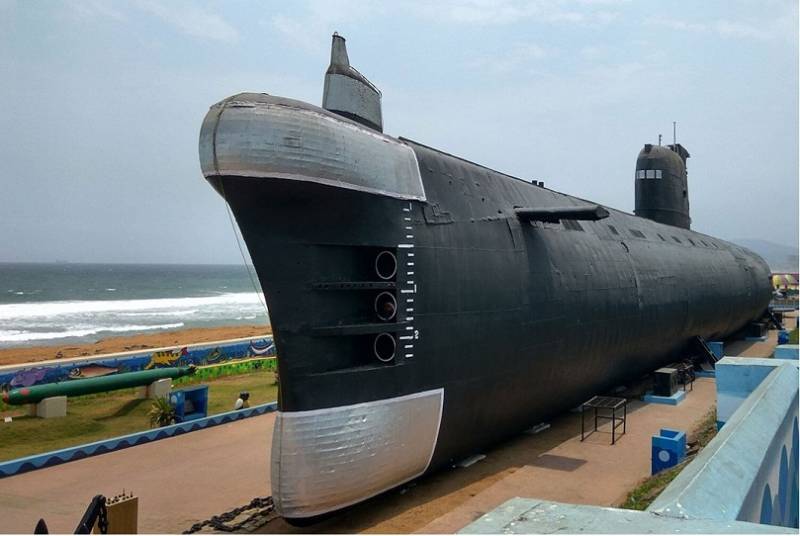
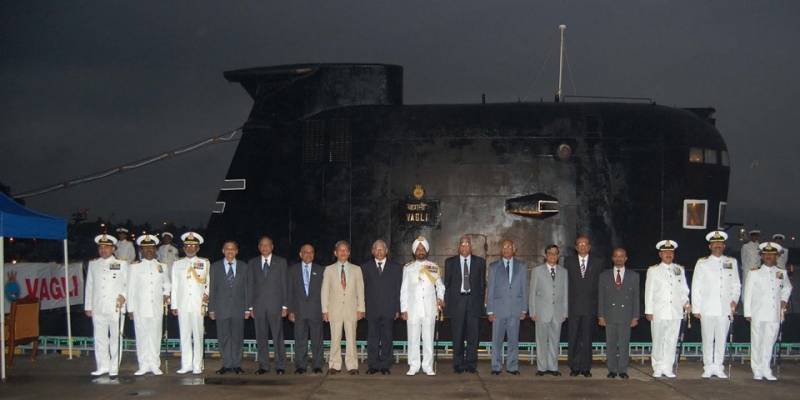

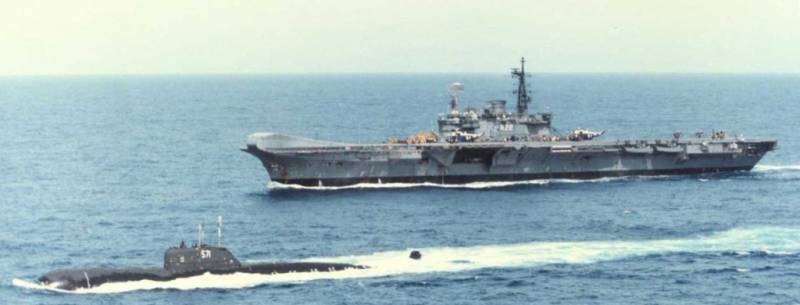
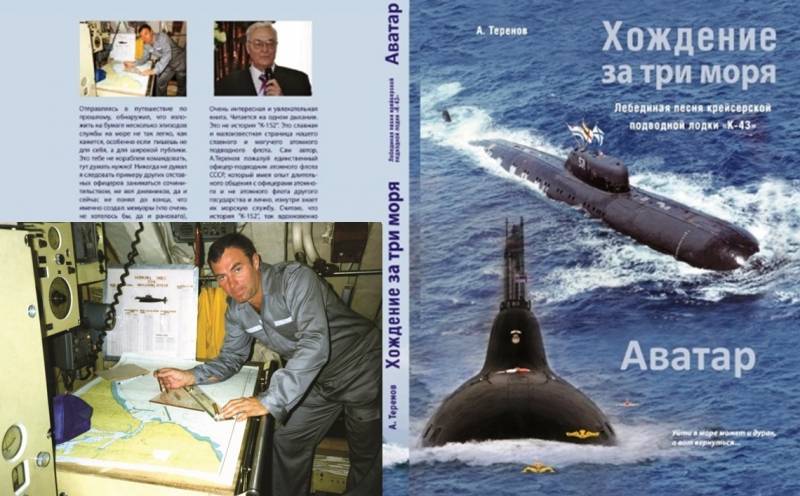
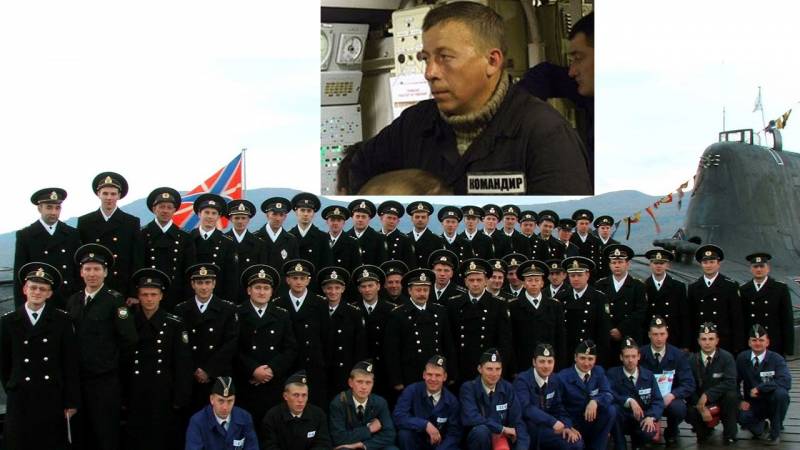
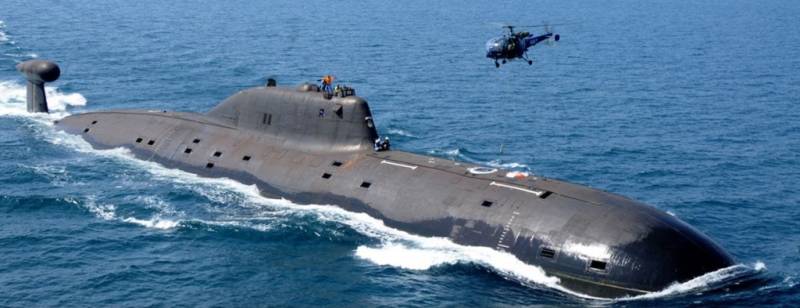
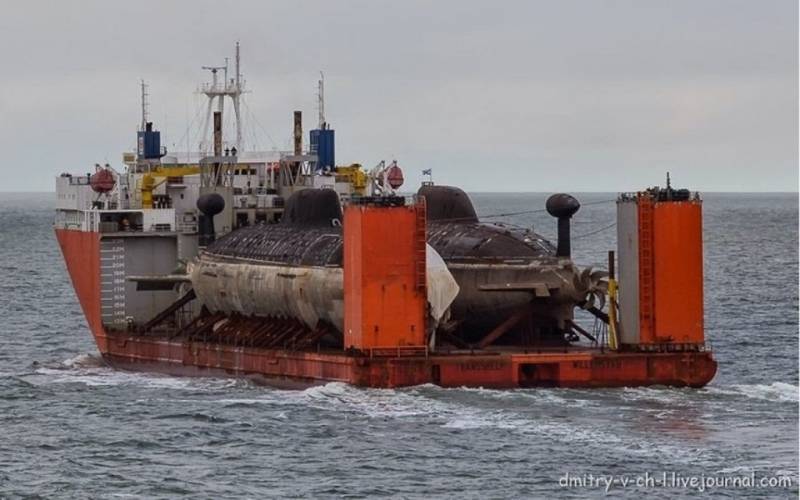
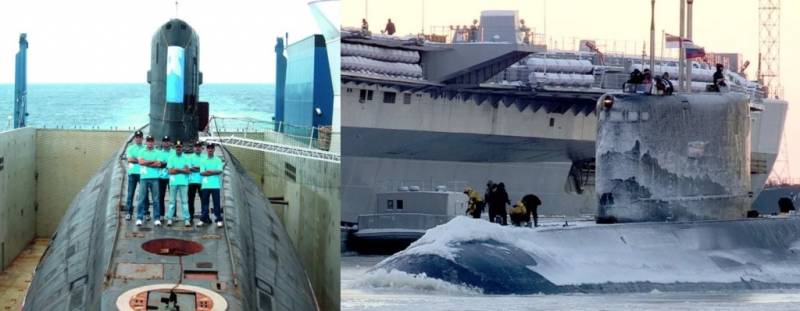
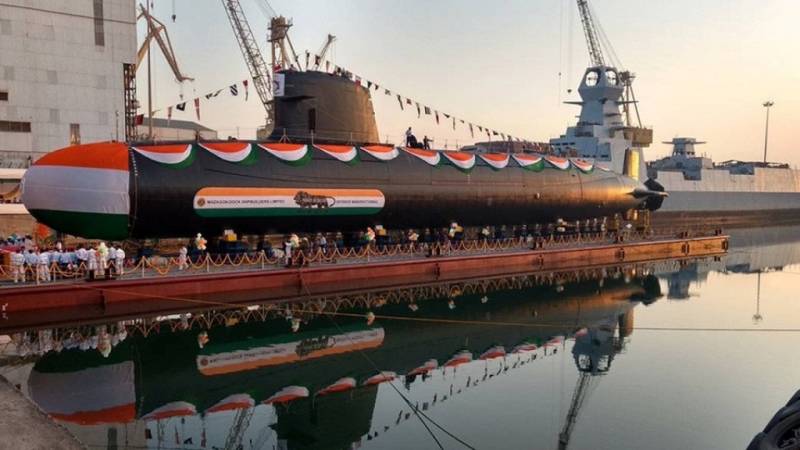
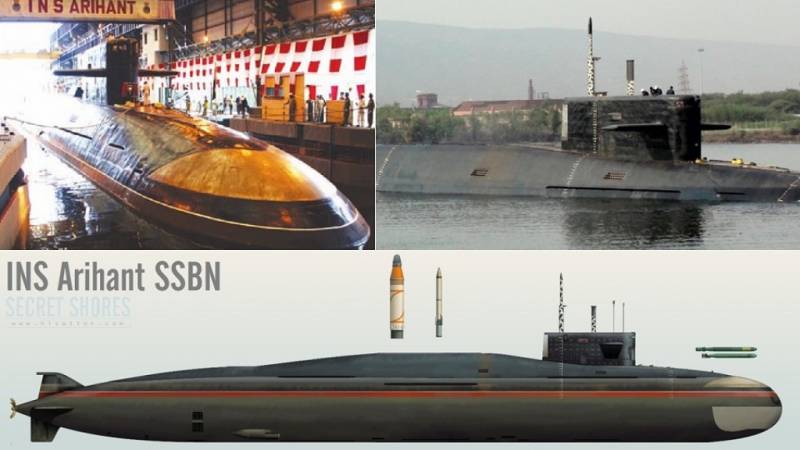
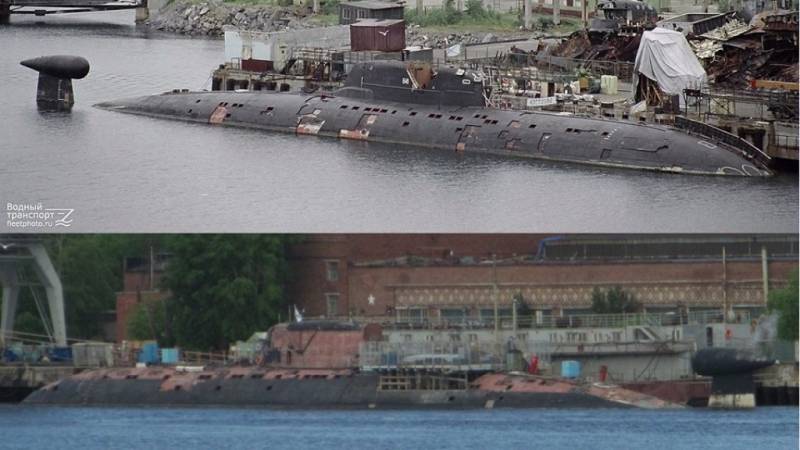
Information